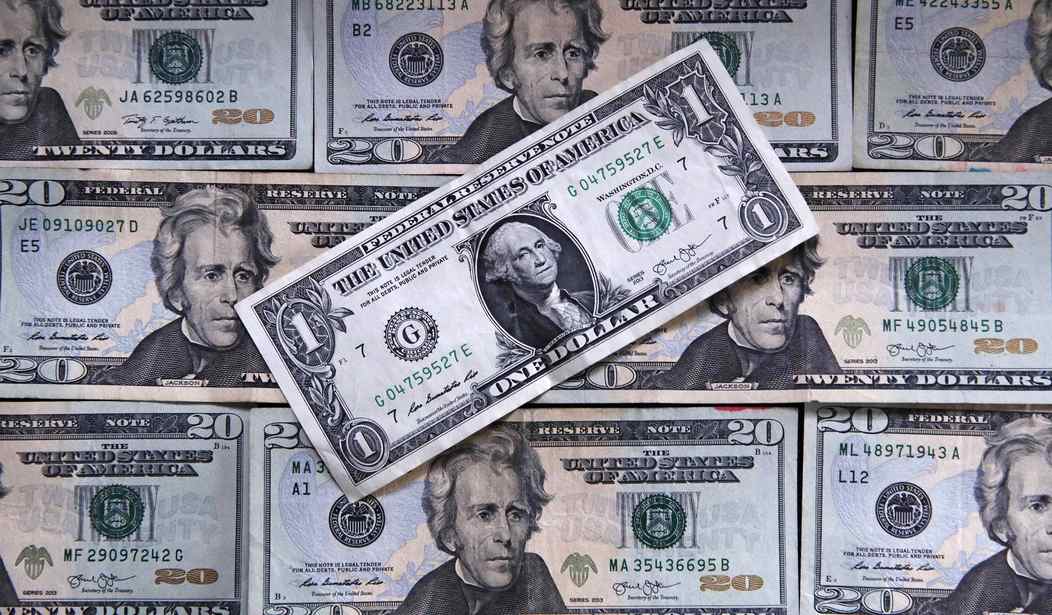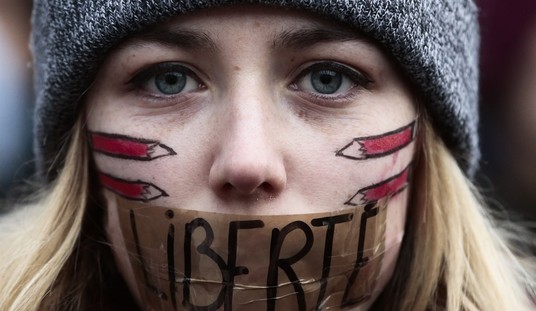There's a new study from two economists at the prestigious Penn Wharton School that gives us a pretty good idea, if not a certain date, of when our debt problems will reach a point of no return.
"Under current policy, the United States has about 20 years for corrective action after which no amount of future tax increases or spending cuts could avoid the government defaulting on its debt whether explicitly or implicitly (i.e., debt monetization producing significant inflation)," Jagadeesh Gokhale and Kent Smetters, authors of the October 6 Penn Wharton Budget Model brief, write in summarizing their findings.
"Unlike technical defaults where payments are merely delayed, this default would be much larger and would reverberate across the U.S. and world economies."
Somebody better sound the alarm because as long as interest rates remain high, servicing the debt is going to cost the U.S. taxpayer an ever larger percentage of the budget, leaving less cash for defense and other vital line items.
In FY 2023, it cost the U.S. taxpayer $879 billion just to pay the interest on our $32 trillion debt. That's 14% of the entire budget. And with more interest rate hikes probably on the way, that number is inching toward $1 trillion just to service our outstanding debt.
Some economists say the national debt doesn't matter. Nobel laureate Esther Duflo told CNBC, “That is not something that the general public should be worried about for the time being at all.”
But the authors of the study beg to differ.
The reason for worrying about accumulating deficits and the resulting growing debt, the authors explain, is that "government debt reduces economic activity by crowding out private capital formation and by requiring future tax increases or spending cuts to accommodate future interest payments." If debt gets too big, lenders can't be paid back, credibility is shot, the dollar loses value, and the economy tanks.
"It would be an unfettered economic catastrophe," economists Joseph Brusuelas and Tuan Nguyen predicted earlier this year of such a scenario. "Our model indicates that unemployment would surge above 12% in the first six months, the economy would contract by more than 10%, triggering a deep and lasting recession, and inflation would soar toward 11% over the next year."
"If, between 2023 and 2053, discretionary spending and revenues were at their 30-year historical averages as a percentage of GDP, then federal debt held by the public in 2053 would exceed 250 percent of GDP," the CBO predicted last summer.
At some point prior to that, when the GDP to debt ratio hits 175%-200%, catastrophic default will occur with runaway inflation and a contracting economy.
In September, PWBM explored three policy options to render fiscal policy less disastrous: increasing taxes on high incomes, reforms to Social Security and Medicare that reduce payouts and increase taxes, and a mix of tax increases and spending cuts. Tax increases alone buy time but still "allow the debt-to-GDP ratio to grow from 100 percent today to 150 percent in 2050, which means that fully stabilizing debt requires additional reforms," the authors note. They predict the options emphasizing entitlement reforms and a mix of tax increases and spending cuts would both stabilize the debt-to-GDP ratio, with entitlement reform allowing the greatest economic growth.
Only when ordinary people are feeling the worst effects of carrying this monumental debt will Congress begin to act. Of course, by that time, it'll be too late.
Right up until the end, the two sides will be blaming each other for the catastrophe rather than doing anything to stave off disaster. The fixes mentioned above are just too painful for politicians to implement, so the chances of this worst-case scenario becoming reality appear to be pretty good.










Join the conversation as a VIP Member